Fantastic Fugitives: Criminals, Cutthroats, and Rebels Who Changed History (While on the Run!) The Changed History Series Written by Brianna DuMont Sky Pony Press 1/05/2016 978-1-63220-412-7 1196 pages Ages 9—12 “Throughout history—and even today—the head honchos usually like things the way they are. Rocking the boat does not make them …![]()
Viewing: Blog Posts Tagged with: Nelson Mandela, Most Recent at Top [Help]
Results 1 - 15 of 15
Blog: Kid Lit Reviews (Login to Add to MyJacketFlap)
JacketFlap tags: NonFiction, Middle Grade, Cleopatra, Mary Queen of Scots, Martin Luther, Typhoid Mary, Harriet Tubman, Spartacus, John Dillinger, Nelson Mandela, Sky Pony Press, Emmeline Pankhurst, 4-Stars, Brianna DuMont, Fantastic Fugitives: Criminals Cutthroats and Rebels Who Changed History (While on the Run!), fugitives, Koxinga, The Pilgrims, Virginia Hall, Add a tag
Blog: (Login to Add to MyJacketFlap)
JacketFlap tags: Books, Picture Books, Non-Fiction, Anne Frank, Aung San Suu Kyi, Chris Riddell, Jackie Morris, Amnesty International, Barroux, Alexis Deacon, Frances Lincoln, Gregory Christie, Harriet Tubman, Christopher Corr, Birgitta Sif, Ali Ferzat, MWD Reviews, Anatole France, Antje von Stemm, Armando Valladares, Chief Standing Bear, Choi Jung-In, Dale Blankenaar, Dreams of Freedom, Elsa Wiezell, Jack Mapanje, Oliver Jeffers, Peter Sis, Michael Morpurgo, Roger Mello, Mordicai Gerstein, Javier Zabala, Nelson Mandela, Janetta Otter-Barry Books, Shirin Adl, Shane Evans, Sally Morgan, Ros Asquith, Malala Yousafzai, MWD book reviews, the Dalai Lama, Marun Hashim al-Rashid, Mikhail Bakunin Clare Balding, Nadia Anjuman, Raouf Karray, Add a tag

Dreams of Freedom: In Words and Pictures
edited by Janetta Otter-Barry, designed by Judith Escreet, with a Foreword by Michael Morpurgo
(Amnesty International/Frances Lincoln, 2015)
All royalties donated to Amnesty … Continue reading ...
Add a CommentBlog: Galley Cat (Mediabistro) (Login to Add to MyJacketFlap)
JacketFlap tags: Deals, Nelson Mandela, Zelda la Grange, Add a tag
 Viking, an imprint at Penguin Random House, will publish a memoir written by Zelda la Grange; for many years, she served as an assistant to world leader Nelson Mandela.
Viking, an imprint at Penguin Random House, will publish a memoir written by Zelda la Grange; for many years, she served as an assistant to world leader Nelson Mandela.
Wendy Wolf, associate publisher and director of nonfiction at Viking, will edit the manuscript. The publisher has set a release date for Good Morning, Mr. Mandela on June 19, 2014. The author plans to donate a percentage of her royalties to the Nelson Mandela Foundation.
Here’s more from the press release: “Zelda la Grange grew up in South Africa as a white Afrikaner who supported the rules of segregation. Yet, a few years after the end of apartheid, she became the trusted assistant to Nelson Mandela. Now, she shares his lasting and inspiring gifts with the world.” (Photo Credit: Anton la Grange)
New Career Opportunities Daily: The best jobs in media.
Add a CommentBlog: The Butterfly Heart (Login to Add to MyJacketFlap)
JacketFlap tags: Uncategorized, Nelson Mandela, Madiba, Dubray Books, Mary Esther Judy, Scoil Ida, World Book Day 2014, Add a tag
Yesterday on World Book Day while I was in Galway in Dubray Books I did a small exercise with one of the groups, they were from Scoil Ida. It was on the subject of Mandela.
I was delighted to hear that they knew so much about him and so obviously admired him. Fair play to the teachers concerned!
I thought I would write down some of the things they wrote, which were things they would like to say to him if he had visited Galway and then paid a surprise visit to their school. Some great conversations would have been had.
So, here goes:
‘Hello Sir, My name is Loretta Ojo. How are you? Were you able to cooperate with life when you were younger? It is very stunning to meet you as you are a true leader of Africa.’
Anon. ‘What was it like to take a stand? You took a stand and you were knocked down but you got back up. The world looks up to you as you achieved your dream. How does that feel?’
‘Was life hard for you when you were young? Was it tough?’
‘Hello Nelson. Cool shirt! I’m Karolina – why did you come all the way here?’
(I gave them this picture of him – hence the cool shirt!)

‘You are an inspiration to our world. You have stood up for yourself and others using peace. You are strong at heart and I’m stunned that I would actually meet the world’s best leader’
‘How did you feel when you were put in jail?’
‘Hello my name is Lucja and I think you are an amazing, inspiring person and a role model. You didn’t deserve to be locked up for 27 years. You deserve all the best things in the world and all the people will forever be in debt to you. I can’t believe I can actually meet you!’
‘Hello I’m Ania. Did you choose to free the people? Do you think that someone else could have done it? Why did the white people treat the black people so badly?’
‘Hello my name is Aoife Campbell. I’m very happy to meet you. I think you are the most brave, kind and clever person in the world. You have done great work for your country. You are an inspiration to me. Thank you for meeting me, you are my hero.’
‘Hi, are you having a good day? You look very nice today.’
‘What is your favourite season?’
‘Hi, you are a really good person, kind and gentle and by the way, can I have your autograph? It was nice to meet you.’
‘How are you so brave and confident? Wow! You are my inspiration, how do you stand up for yourself? I can’t believe I got to meet you.’
‘This is such an honour. I think you are so amazing. Were you not scared?’
‘Hi. I’m so glad to meet you. You are so caring and generous. I wish I and other people could be like you.’
‘Hello. How do you think life should be? Why did you want to be President and was it easy?’
Nelson: Hello and how are you? Me: My name is Shauna. Nelson: Well, nice to meet you. Me: When you were in school what did you learn?’
‘Wow! OMG! How much time do I have? You’re so cool. How are you so brave?’
‘I can’t believe I’m actually meeting you. My name is Emily, I’m eleven years old and I love art and reading.’
‘What is it like to be you? Do you love what you do?Why did you come here? Thank you for listening to me, you are a brave man.’
‘Did you get any food or drink in jail?’
‘Hello Nelson Mandela. My name is Evelyn Byrne. I think everything you said was correct and that everyone should have equal rights and not to judge others and we must live life to the fullest. Your words have changed the world and have made people think about things that were wrong.’
‘You gave light when the rest of the world was dark, you gave faith when the rest of the world gave up, you gave peace when the rest of the world was at war.’
‘Hello my name is Grainne and you are my hero.’
‘Hello my name is Divine and it is an honour to meet you. I wrote you a poem but sorry I didn’t finish it.’
Blog: OUPblog (Login to Add to MyJacketFlap)
JacketFlap tags: Nelson Mandela, *Featured, raymond, philosophy of law, legal philosophy, Ray Wacks, raymond wacks, Ronald Dworkin, wacks, without express, Law, Philosophy, mandela, VSI, society, morals, Very Short Introductions, Add a tag

By Raymond Wacks
The law is always news. It plays a central role of law in our social, political, moral, and economic life. But what is this thing called law? Does it consist of a set of universal moral principles in accordance with nature? Or is it merely a collection of largely man-made rules, commands, or norms? Does the law have a specific purpose, such as the protection of individual rights, the attainment of justice, or economic, political, and sexual equality? Can the law change society as it has done in South Africa?
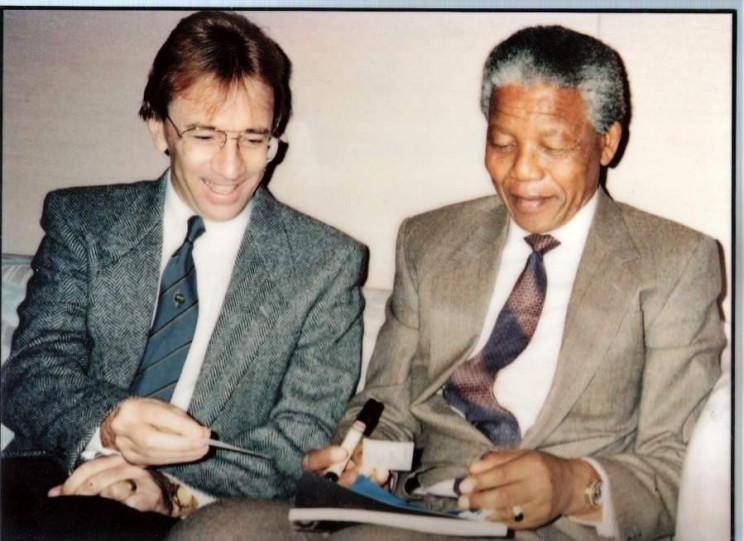
Nelson Mandela, the first President of a democratic South Africa, with the author Raymond Wacks, following his release from 27 years of imprisonment.
Even the sensationalist criminal trials—real or imagined, staple movie and television fare—capture features of the law that routinely vex legal philosophers. They spawn awkward questions about moral and legal responsibility, the justifications of punishment, the concept of harm, the judicial function, due process, and many more. The philosophy of law, in other words, is by no means exclusively an abstract, intellectual pursuit. Indeed several legal philosophers contribute to important contemporary discussions about highly controversial questions such as abortion, euthanasia, pornography, and human rights.
No society can properly be understood or explained without a coherent conception of its law and legal doctrine. The social, moral, and cultural foundations of the law, and the theories which both inform and account for them, are no less important than the law’s ‘black letter’. Among the many topics within legal theory’s spacious borders is that of the definition of law itself: before we can begin to explore the nature of law, we need to clarify what we mean by this often elusive concept.
One question that continues to dominate legal philosophy is the seemingly intractable problem of the relationship between law and morals continues to dominate academic debate. Can law be as neutral and value-free as legal positivists seek to demonstrate, or is law steeped in inescapable moral values? Can law be analytically severed from morality? Or is the pursuit of neutrality and objectivity by legal positivists—from John Austin and Jeremy Bentham to the Realists and their modern followers—a sanguine will o’ the wisp? Is a ‘science of law’ (exemplified by Hans Kelsen’s ‘Pure Theory’) a fantasy? Is HLA Hart’s focus upon the ‘municipal legal system’ still helpful in our age of globalization and pluralism? If law does have a purpose, what might it be? Can it secure greater justice for all who share our planet?
None of these questions has a simple answer. But it is in their asking—and careful reflection upon them—that we might better understand the nature and purpose of law, and thereby perhaps secure a more just society. In the face of injustice, it is easy to descend into vague oversimplification and rhetoric when reflecting upon the proper nature and function of the law. Analytical clarity and scrupulous jurisprudential deliberation on the fundamental nature of law, justice, and the meaning of legal concepts are indispensable tools. Legal philosophy has a decisive role to play in defining and defending the values and ideals that sustain our way of life.
Raymond Wacks is Emeritus Professor of Law and Legal Theory. His areas of interest are legal theory, privacy, and human rights, and he has published numerous books and articles on various aspects of law, including Understanding Jurisprudence: An Introduction to Legal Theory (OUP, 2012), Law: A Very Short Introduction (OUP, 2008), and Privacy: A Very Short Introduction (OUP, 2010), and Philosophy of Law: A Very Short Introduction (OUP, second edition 2014)
The Very Short Introductions (VSI) series combines a small format with authoritative analysis and big ideas for hundreds of topic areas. Written by our expert authors, these books can change the way you think about the things that interest you and are the perfect introduction to subjects you previously knew nothing about. Grow your knowledge with OUPblog and the VSI series every Friday, and like Very Short Introductions on Facebook. Subscribe to Very Short Introductions articles on the OUPblog via emailor RSS.
Subscribe to the OUPblog via emailor RSS.
Subscribe to only philosophy articles on the OUPblog via emailor RSS.
Image credit: (1) By Raymond Wacks: Nelson Mandela with Raymond Wacks. Do not reuse without express permission. (2) By David Shankbone. CC-BY-SA-3.0 via Wikimedia Commons
The post Law and the quest for justice appeared first on OUPblog.
Blog: James Preller's Blog (Login to Add to MyJacketFlap)
JacketFlap tags: Current Events, Nelson Mandela, Around the Web, Education is the most powerful weapon, Michael S. Williamson, Add a tag
“Education is the most powerful weapon you can use to change the world.”
– Nelson Mandela.
Today I came across this remarkable 1994 photograph by Michael S. Williamson, and this powerful quote, and thought I’d bring them together here.
For my own self. And for you to stumble upon.
That is all.
Carry on.
Add a CommentBlog: Becky's Blog (Login to Add to MyJacketFlap)
JacketFlap tags: apartheid, Nelson Mandela, Cape Town, Madiba, Kobus van Wyk, Nelson Mandela Metropolitan University, Apartheid of the Heart, Vlei, South Africa, Bill Clinton, Add a tag
I just realized I haven't blogged since June 1. That is partly due to the fact that I could NOT blog in South Africa. I barely had internet, and when I did, the blog clogged the airwaves and crashed, so after multiple attempts, I gave up.
Let it also be known that every night now, I dream of South Africa.
My only week in Minnesota since May 18 was a bit hectic. Now I am in North Carolina at Nikki, Tom, and Alec's house, but Alec is sleeping, so here goes.
Yesterday morning, Nikki, Alec, and I had a delightful short morning at Noelle, Tony, and Maren's house in Arlington, Virginia, before we headed to Pennsylvania Avenue.
There I met Julia Nguyen, Senior Program Officer, Division of Education Programs, at the National Endowment for the Humanities Office in the historic Old Post Office complex. (Nikki and Alec went to the National Museum of Natural History). 
Julia was entirely helpful and supportive of the ideas Scott Fee (Construction Management, MSU,M, now newly appointed Interim Assistant Dean in the College of Science, Engineering, and Technology) have cooked up. We want to apply for a big NEH grant for "Bridging Cultures" at Community Colleges...which also requires a Community College to be in collaboration with another institution. Seems as if this might have been written for what we are working toward.
I won't belabor all our plans here, but they do include bringing Prof Kobus van Wyk (below) to Mankato to speak at a conference at South Central College. Kobus is the endowed chair of the brand-new department of Human Settlement Development Management at Nelson Mandela Metropolitan University in Port Elizabeth, South Africa. This department has a focus of somehow revamping the rebuilding the townships while giving full consideration to human needs (safety, education, health, transportation, etc., etc. which all relate to Humanities).
Our approach to this grant is that stories are the medium that move information from our head to our hearts and move us to action. Stories are what the Humanities convey--through art, music, literature, film, history, architecture, etc., etc. Stories about South Africa all end up leading us to the townships. THERE, in the townships, the Humanities converge with the Built Environment.
If you don't know, townships exist in every urban area of South Africa, and a version exists in most rural areas, too. Townships are the legacy of apartheid. Apartheid means "separateness" in Afrikaans. When segregation was forced because the Afrikaner government under the Nationalist Party believed that races could only thrive while separated (I can't even begin to comment on this outrageously horrific idea), non-white citizens were forced into specified areas and couldn't leave without passbooks...similar to passports but necessary for traveling outside the neighborhood.
Now the townships still exist, with vast overpopulation and poverty. BUT look at the joy and sense of community. As we walked through Vlei ("Swamp") Township on the edge of Cape Town, these kids were dancing their hearts out. The oldest boy drummed with amazing skill on an old washtub. The mamas were busy cooking. Joy and hope and community have NOTHING to do with affluence.
We all know that the one thing that can break down prejudice is meeting a specific person from the group against which we hold a prejudice (Think about the movie American History X). Stories do the same thing. STORIES help us meet individual people, help us empathize, force us to understand oppression and misfortune; stories change our attitudes about "others."
We believe that South Africa is a microcosm that is a metaphor for the world. South Africa is the site of one (not unlike the Holocaust) of the worst legalized systems of oppression in the world. There is racism of every type, and not only black/white conflict but between the "White tribes" (Afrikaners/Boers and English) themselves, East Indians, many other Asian groups, "colored," and more. There is also some of the most joyful, colorful hope in the universe, despite oppression.
When "Madiba"--Nelson Rolihlahla Mandela retired from the South African presidency, President Clinton said the following:
"In every gnarly, knotted, distorted situation in the world where people are kept from becoming the best they can be, there is an apartheid of the heart. And if we really honor this stunning sacrifice of twenty-seven year, if we really rejoice in the infinite justice of seeing this man happily married in the autumn of his life, if we really are seeking some driven wisdom from the poser of his example, it will be to do whatever we can, however we can, wherever we can, to take the apartheid out of our own and others' hearts."
That's what we want to do with this grant. Present some opportunities to explore how learning about South Africa can help us all eliminate APARTHEID OF THE HEART.
Blog: Becky's Blog (Login to Add to MyJacketFlap)
JacketFlap tags: South Africa, Humanities, Nelson Mandela, Add a tag
Bill Clinton summed it up well. He said this after Mandela's marriage at age 80, and on the occasion of Mandela's retirement from the South African Presidency:
"In every gnarly, knotted, distorted situation in the world where people are kept from becoming the best they can be, there is an apartheid of the heart. And if we really honor this stunning sacrifice of twenty-seven year, if we really rejoice in the infinite justice of seeing this man happily married in the autumn of his life, if we really are seeking some driven wisdom from the poser of his example, it will be to do whatever we can, however we can, wherever we can, to take the apartheid out of our own and others' hearts."
Blog: The Butterfly Heart (Login to Add to MyJacketFlap)
JacketFlap tags: Uncategorized, South Africa, Nelson Mandela, Madiba, Rolihlahla, Add a tag
Nelson Mandela has, in the course of his extraordinary life, said many wise things. This morning I was thinking about one in particular:
‘There is no passion to be found playing small – in settling for a life that is less than the one you are capable of living’ Nelson Rolihlahla Mandela.
Given that this blog is (mostly!) about stories, writing and books I was thinking about this in relation to writing. Writing, whether creatively in fiction or non-fiction, is self directed. You have to find the time and the space to do it, no one else can do that for you. It is from you, you yourself have to extract it from your head and put it down. If you are writing, whether for a living or for pleasure, you owe it to yourself to be the very best you can, to ignore your own excuses as to why you haven’t finished or why it is not as good as you would like it to be. It is in your hands.
I have been lucky in that I am in a position where I have the time and space to do this – it is an absolute privilege and I treasure it. But I know I could do more. Time passes quickly and as a writer you need to be able to ask yourself at the end of each day, ‘what have I written? and is it good?’ If the answer is ‘nothing’ then you are failing yourself. There are days when my answer is ‘nothing’ and it should not be so.
There is more though to what he said – because to be the best we can means being the best we can not only for ourselves but for others. He has lived that to the full. He has, at every turn, done the right thing for others. He continues to do that. South Africa and the world have been made richer by his life and it is why he remains beloved by so many. He is a one off. Just one look at that smile will tell you that!
Blog: OUPblog (Login to Add to MyJacketFlap)
JacketFlap tags: History, Africa, south africa, mandela, prison, trial, nelson, apartheid, johannesburg, kenneth, Nelson Mandela, *Featured, judicial system, Kenneth S. Broun, Rivonia trial, Saving Nelson Mandela, broun, rivonia, defendants, codefendants, Add a tag
By Kenneth S. Broun
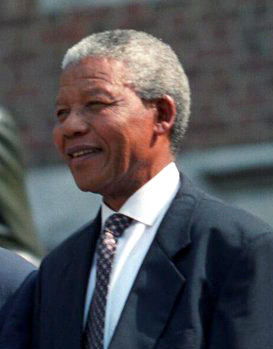 Twenty-two years ago, on the 11th of February 1990, Nelson Mandela walked out of a South African prison, a free man for the first time in twenty-seven years. He immediately assumed the leadership role that would move South Africa from a system of apartheid to a struggling but viable democracy. No one person, not even Nelson Mandela, was solely responsible for this miracle. But no one can doubt the crucial role that he played in the process that brought a new era to South Africa, or that his intellect, sturdy leadership, and political savvy made this process far more peaceful than anyone had predicted would be the case.
Twenty-two years ago, on the 11th of February 1990, Nelson Mandela walked out of a South African prison, a free man for the first time in twenty-seven years. He immediately assumed the leadership role that would move South Africa from a system of apartheid to a struggling but viable democracy. No one person, not even Nelson Mandela, was solely responsible for this miracle. But no one can doubt the crucial role that he played in the process that brought a new era to South Africa, or that his intellect, sturdy leadership, and political savvy made this process far more peaceful than anyone had predicted would be the case.
That Mandela was alive to assume this leadership is a remarkable story. When the trial that led to his conviction began in 1963, most in South Africa and abroad predicted that he and his codefendants would be hanged. Mandela and his codefendants faced charges brought under the recently enacted Sabotage Act, the violation of which carried the death penalty. The South African government proudly announced that it had brought to justice men who had planned and begun to carry out a campaign for its violent overthrow. The country’s press celebrated the success of the police in catching the violent criminals who represented a very real threat to the way of life of white South Africa. Foreign representatives were told by informed sources that the maximum sentence for the top leadership was possible, indeed likely.
The 1963–64 trial of Mandela and his co-defendants is known as the Rivonia trial, named for the Johannesburg suburb in which most of the defendants were arrested. Other defendants included ANC leaders Walter Sisulu, Govan Mbeki, the father of future South African president Thabo Mbeki, and the South African Indian leader, Ahmed Kathrada.
A team composed of lawyers of great intellect, legal ability and integrity defended the accused. They applied their considerable skill to a cause in which they deeply believed. The accused, through both their statements to the court and their testimony, demonstrated strength of character and devotion to a cause that even a hostile judge could not, in the end, ignore. The conduct of the judge before whom the case was tried illustrates both the strength and weaknesses of the South African judicial system. The judge may well have been independent of the government and its prosecutor, but his own prejudices guided him through much of the proceedings. The prosecutor, who was described by a visiting British barrister as a “nasty piece of work” may have hurt, rather than helped his case by engaging in a political dialogue with the defendants who took the witness stand.
White South African opinion was clearly in favor of the prosecution and harsh sentences for the accused. But international opinion was almost unanimous in its support for them, particularly in the newly independent African states and the Communist bloc. There was also considerable attention to the trial on the part of the major Western powers, or at least concern that death sentences would sour relations with African and other Third World people. The question was how the West, and in particular the United States and United Kingdom, might attempt to influence the trial’s outcome.
Perhaps the key point in the trial was Nelson Mandela’s statement from the dock, a statement made in lieu of testimony. He ended the statement with these words:
During my lifetime I have dedicated myself to the struggle of the African People. I have fought against white domination, and I have fought against black domination. I have cherished the ideal of a democratic and free society in which all persons live together in harmony and with equal opportunities. It is an ideal which I hope to li
0 Comments on Nelson Mandela, 22 years after his release from prison as of 1/1/1900Add a Comment
Blog: Books 'n' stories (Login to Add to MyJacketFlap)
JacketFlap tags: South Africa, Invictus, Nelson Mandela, Add a tag
Lehigh Valley Friends Meeting held a movie night on Saturday, the 5th. We watched Invictus. It's a sports/political film about the South African rugby team and Nelson Mandela. It was riveting.
Only a man with the imagination of Mandela could see how important a sports team is to a nation, especially a nation who has been banned from international competition because of the country's policy of apartheid.
In the audience last night was a young woman who grew up in South Africa. Mandela became president three days before her 16th birthday. She said that the country pulls together to support their sports teams, dancing in the streets, cheering and mingling as if race and color did not matter. Then, everything returns to normal. Sigh. But even that weeks long camaraderie is a huge step in the right direction.
So, friends and Friends, hold South Africa in the Light, that the way to reconciliation continues, one sports event at a time.
Blog: OUPblog (Login to Add to MyJacketFlap)
JacketFlap tags: History, Politics, Current Events, Geography, A-Featured, World History, 1995 Rugby World Cup, south africa, place of the year, Iris Berger, 2010 World Cup, Atlas of the World, Invictus, Nelson Mandela, Caster Semenya, Jacob Zuma, Add a tag
Michelle Rafferty, Publicity Assistant
Iris Berger is professor of Professor of History, Africana Studies, and Women’s Studies at the University at Albany and author of Threads of Solidarity: Women in South African
Industry, 1900-1980 and South Africa in World History. For many years, she was involved in anti-apartheid organizations in Upstate New York. In the following piece she recalls how sports have played a vital role in South African politics. You can check out other “Place of the Year” contributions here.
I had never paid much attention to rugby. My only previous encounter with the game occurred on September 22, 1981 when I joined 1,000 other demonstrators who marched in a downpour from the New York State Capitol to a stadium on the edge of Albany to protest the match between the Springboks and the local rugby team. As Pete Seeger led us in singing “Wimoweh,” the virtually all-white South African team trounced the Eastern All-Stars 41-0. Threats of violence had prompted Governor Hugh Carey to cancel the game and an explosion at the headquarters of the Eastern Rugby Union seemed to confirm his fears. But the United States Court of Appeals ruled that cancellation would be an abridgement of freedom of speech.
This brief immersion in the politics of professional sports left me unprepared for the events of June 24, 1995 when I arrived in Cape Town in mid-morning, groggy from the twenty-four journey from Albany. A year earlier apartheid had ended and Nelson Mandela was elected President in the country’s first democratic elections. Determined to fight my jet lag and adjust to local time, I walked from my quaint guest house at the foot of Table Mountain to the bustling Main Road and caught a cramped mini-van taxi to the city center. Getting off at the train station, I was mystified by the quiet. Only the Zimbabwean women street vendors, displaying soapstone sculptures and crocheted sweaters, broke the silence. When I ventured a few blocks to a small café for lunch, I found the crowds I’d been expecting – but they were all huddled in front of the television set intent on following a rugby game between South Africa and New Zealand, cheering boisterously when the local team scored. The scene was repeated at my next stop – the Bo Kaap Museum in the former Muslim quarter of the city, now furnished as a nineteenth-century house.
Only when I returned to the guest house in mid-afternoon and found everyone there glued to the screen did I finally realize that I had unwittingly stumbled onto an historic event. Just as the anti-apartheid movement had enlisted the national passion for rugby in the interests of liberation, Mandela saw that hosting the World Cup might offer an opportunity for a symbolic reconciliation between the black-dominated government and the white minority, now ousted from its exclusive hold on power. This time I joined the group to witness – and celebrate – the victory of a new South Africa and see to Mandela walk onto the field in his team’s bright green cap and uniform, his shirt bearing the number of the team’s white captain.
Invictus, Clint Eastwood’s new film dramatizing these events will no doubt resurrect memories of the country’s ecstatic response in 1995, when South Africans were still celebrating the country’s transformation from a bastion of racism to a “rainbow nation.” But fifteen years later, life sometimes seems more complicated, even on the playing fields. The recent furor over the gender identity of the South African running champion Caster Semenya, which provoked heated controversy both internationally and in South Africa, mirrors the issues now confronting a nation struggling to overcome a legacy of poverty and unemployment, and to face the more recent challenge of HIV/AIDs. It’s an open question of whether, in this more difficult context, the current President Jacob Zuma will be able to use the World Cup soccer championship in 2010 to reinvent the country’s image and to renew people’s commitment to a shared national identity.
Blog: OUPblog (Login to Add to MyJacketFlap)
JacketFlap tags: History, Geography, A-Featured, south africa, Table Mountain, World History, African American Studies, place of the year, African History, Nelson Mandela, Blaubergstrand, Blue Mountain Beach, Cape Point, Capet Town, Hout Bay, protea, Richard Rathbone, Robben Island, Add a tag
Michelle Rafferty, Publicity Assistant
Author Richard Rathbone first went to South Africa as the Students’ Visiting Lecturer Fund nominee at Cape Town University in 1976 and returned as Visiting Lecturer to the
University of the Witwatersrand in 1979 and then as visiting professor to the universities of Cape Town and Witwatersrand in 1998. He has authored, co-authored and edited ten books on African history including African History: A Very Short Introduction. In the following piece Rathbone reveals where South Africa’s true beauty lies and why it is deserves to be “Place of the Year.” You can check out more “Place of the Year” contributions here.
South Africa has been my place of the year on a regular basis since we first got to know each other in 1976. It wasn’t quite love at first sight; rainy winter days in Cape Town spent in chilly rooms with inadequate heating aren’t exactly romantic. But like many who think they are in love, I noticed South Africa’s looks first and learnt to enjoy its company afterwards. If you start, as I did, at the Cape, you first catch your breath by that jagged seascape dominated by Table Mountain and the last land before the South Pole. And at Cape Point I saw my first baboons, and my first sea eagles soaring over the meeting of the Indian and Atlantic Oceans, the meeting of hot and cold, ying and yang. But I saw all of it first during apartheid and all that beauty was deformed by very visible cruelties of the system which was older than apartheid. The beaches are scattered with the relics of ship-wrecks and the tragedies of lost lives. Piles of seashells are all that is left to memorialise the old hunter-gatherers, the strandloopers, whose beaches these once were, years before whites started building mile on mile of ugly but expensive beachfront apartments. And the most spectacular view of Table Mountain, that from Blauberg Strand, the Blue Mountain Beach, is spoilt by the grim history of Robben Island inescapably there at the edge of the famous view, a leper colony before it was escape- proof prison. In turn the majestic sweep of Hout Bay was deformed by the fish-canning factory whose sad labourers’ drawn faces betrayed harsh working conditions and poor nutrition.
Further along the coast and then inland are the beautiful winelands, glorious valleys over-shadowed by intimidating mountains. Here again beauty is bittersweet for this world once depended upon slavery and until very recently upon the labour of the descendants of those slaves whose pay was partly taken in alcohol which damaged their and their children’s health. The country’s national flower, the protea, catches the contradictions being both shamelessly pretty while being incredibly hard, irresistible and repellent. I had fallen in love with a tart, a very pretty tart, but a tart with stony heart.
But I learnt fast that the real beauty was and is still to be found less in its scenery and more in its people. In the apartheid years I was thrilled. Inspired by, and even jealous of, the commitment and courage of so many people, black and white, Afrikaaner and African. The cruelty of it all was so obvious; housing in which decent people would refuse to house a dog, the in-your-face insult of “whites only” signage and the ultimate negation of humanity, the idea that people of colour were somehow non-whites, somehow less than human in the eyes of the country’s rulers. The sheer awfulness of that all provoked something more wonderful than cowed, sullen victim-hood. Instead defiance and resistance were suffused with a warm and inclusive humanity. Although it was a state which killed, tortured and incarcerated innumerable people, it and its supporters were made absurd as well as cruel and weakened by the sting of satire, of cartoons, of performances both formal and informal. What often appeared to be obsequious behaviour was frequently audacious and thinly concealed piss-taking at the expense of thoughtless whites. It was and is a sceptical society, a society which refused dictation. And that underlying refusal to internalise the brutal and unintelligent messages of apartheid but instead to imagine and then work for a world without it has informed all that is good about today’s South Africa. So much of that is bound up in the remarkable personality of Nelson Mandela.
Of course South Africa isn’t perfect; all countries that survive revolutions, and the end of apartheid was a revolution, are bound to be imperfect because revolutions are violent affairs which generate all sorts of collateral damage, psychological as well as material. But the real reason why South Africa must be my place of the year is that despite all the many temptations to break with the idea of “a rainbow nation”, the vast majority of South Africa’s continue to subscribe to warmth and humanity, and to reconciliation.
Blog: Biblio File (Login to Add to MyJacketFlap)
JacketFlap tags: Cybils, Nonfiction, art, nonfiction monday, Anne Frank, Susan Goldman Rubin, Nepal, Christine Taylor-Butler, Mt. Everest, Nelson Mandela, Bob Raszka, Chris Van Wyck, Simon Wiesenthal, Jan Vermeer, Add a tag
For today's nonfiction offerings, I'm giving you a slew of books that are Cybils nominees. They're all under 100 pages, which I normally don't review, but they're Cybils books, so they get a pass.
Basically, this is a book that talks about Mount Everest and the people who live on and around it. Taylor-Butler tells of the expeditions to the top and the perils involved therein, but spends most of her time talking about life in Everest's shadow, particularly for the Sherpa people and their culture. Personally, I would have loved more information about life on the northern Tibetan/Chinese side of the mountain and how it's the same or different from life on the southern Nepalese side of the the mountain.
Beautifully laid out with great pictures and a lot of side bars and pull-out boxes, I especially appreciated Taylor-Butler's focus on how the Sherpa people and traces their initial interactions with foreign climbers who needed them to succeed while but looked down on them as backwards natives up through today, where they claim much of Everest's glory for themselves and are working to keep it a high-stakes tourist spot (good for the economy) while not letting too many people come and destroy their mountain and way of life.
Book provided by... the publisher, for Cybils consideration
The Vermeer Interviews: Conversations With Seven Works of Art Bob Raczka
A very interesting idea. Raczka interviews the subjects of seven paintings by Jan Vermeer. The people in the paintings tell of their lives, of what Dutch culture at the time of the painting, and how to read the painting, pointing out details of the painting that give clues to what's going on, and details that show why Vermeer was so good.
This is a really fascinating book that's going to be a quirky sell to kids. It's not one they're going to pick up on their own, but I think they'll really like it once they start reading it. It's getting them to read it that's going to take a stealthily guiding hand.
My one complaint is that, while the printing is high quality, there were times when areas we pointed out that had been painted over. While I'm sure these things are visible in the originals, I couldn't see most of them in the book. That might just be me, but it was frustrating.
Book provided by... the publisher, for Cybils consideration
The Anne Frank Case: Simon Wiesenthal's Search for the Truth Susan Goldman Rubin, illustrated by Bill Farnsworth
Simon Wiesenthal, a Holocaust survivor, made it his life's work to track down Nazis and bring them to justice. Despite the title, the book doesn't focus much on Anne Frank. Wiesenthal's search to find the man who arrested the Franks provides an interesting frame to tell of Wiesenthal's life and work, but his overall mission, and not that particular case, are the focus.
While I can't find information in the book itself, the illustrations look like oil paintings and are done in an almost impressionistic style. While I prefer photographs to illustrate nonfiction, I appreciate that Rubin was trying to tell this story like it was a story, and a unified illustration approach helps that.
There are photographs, as well as more biographical details, further reading (some of it even for kids!) and source notes in the back of the book.
An interesting look at what people did after the war to help deal with the affects of the Holocaust.
Book Provided by... my local library
Nelson Mandela: Long Walk to Freedom Abridged by Chris Van Wyk (original by Nelson Mandela), Illustrated by Paddy Bouma
This is a picture book version of Mandela's adult autobiography. The picture book version makes the material and Mandela's life accessible to 2nd-4th graders. It has a nice timeline in the back, as well as a glossary.
I have a few complaints about this book-- one is that it is fully illustrated with absolutely NO photographs. Not one! It's not like there aren't a million photos of Mandela out there! Not even one in the back matter? Really?
The book also doesn't explain the term "colored" in the South African context. In the US, colored is a term that meant African-American and we often see it in books for children about the Civil Rights Era. When explaining apartheid, it says "It classified every person in South Africa according to race, for example, as 'black,' 'colored,' or 'white.'" Later on it says "Thousands of colored, Indian, and white South Africans were against it [apartheid], too." (sorry, it's an unpaged book, so no page numbers.) It was confusing and even I had to look it up to see what it meant. (People who were of mixed race, but not "black enough" to be considered black under apartheid.)
Also, in editing the book for children, the reader fails to really grasp the full sense of what Mandela did, especially before being sent to prison. There's not a great sense of why Mandela is the hero he is, which is sad.
Book Provided by... my local library
Round up is over at Abby (the) librarian!
Links to Amazon are an affiliate link. You can help support Biblio File by purchasing any item (not just the one linked to!) through these links. Read my full disclosure statement.
Blog: OUPblog (Login to Add to MyJacketFlap)
JacketFlap tags: History, Politics, Current Events, Geography, A-Featured, A-Editor's Picks, south africa, World History, atlas, World Cup, place of the year, 1995 Rugby World Cup, 2009 Place of the Year, 2010 World Cup, Atlas of the World, FIFA, Invictus, Nelson Mandela, Oxford Place of the Year, Add a tag
Michelle Rafferty, Publicity Assistant
I dare you to watch the trailer for this December’s Invictus—the story of how a newly elected Nelson Mandela used the 1995 Rugby World Cup to bring his people together—without feeling slight heart palpitation. Particularly in a scene where we see Mandela speaking with a political confidante:
“This rugby, it’s a political calculation,” she says.
“It is a human calculation,” responds Mandela.
Sounds like one awfully loaded conversation about rugby, but if there’s anything history, cinema, and Nike commercials have taught us, it’s that the game ultimately represents something much bigger than itself. From taking a stand (1980 Moscow Games boycott) and breaking social barriers (Jackie Robinson, Dara Torres) to beating odds (Nancy Kerrigan, Lance Armstrong) and growing up (Mighty Ducks 1, 2, and 3), sports are often the metaphors and inspiration of our lives. Which leads us to our big announcement… as it moves to the forefront of the global sports arena once more, we are excited to announce South Africa as Oxford’s “Place of the Year.” The 2010 World Cup—arguably the most important international event the country will host since officially becoming a post-apartheid, democratic nation only 15 years ago—signifies further transformation, quantifiable in millions of dollars worth of new infrastructure.
How much new infrastructure?
According to FIFA, contributions from the South African government total (in rands “R”):
Stadium and precinct development: R9.8 billion
Transport: R13.6 billion
Broadcast and telecommunications: R300 million
Event operations: R684 million
Safety and security: R1.3 billion
Event volunteer training: R25 million
Ports of entry infrastructure: R3. 5 billion
Immigration support: R630 million
Communications, hosting, legacy and culture: R504 million
Which translates to…
According to consulting firm Grant Thornton, which drew up the financial impact report for South Africa’s World Cup bid committee:
R55.7 billion to the South African economy
415,400 jobs
R19.3 billion in tax income to the government
The World Cup has received mixed reviews however: Economy boost or money suck? Increase in jobs or class divider? Interna



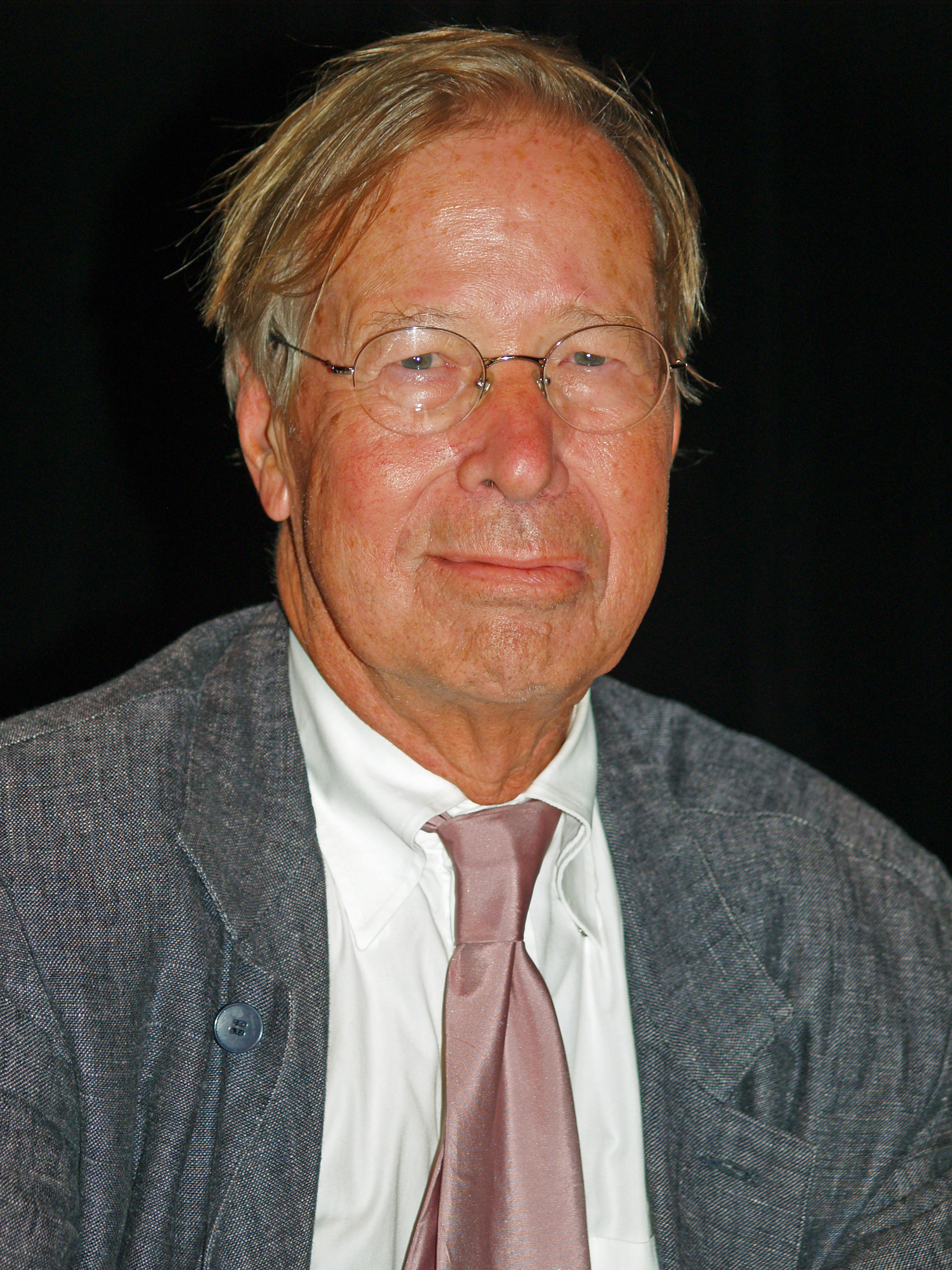
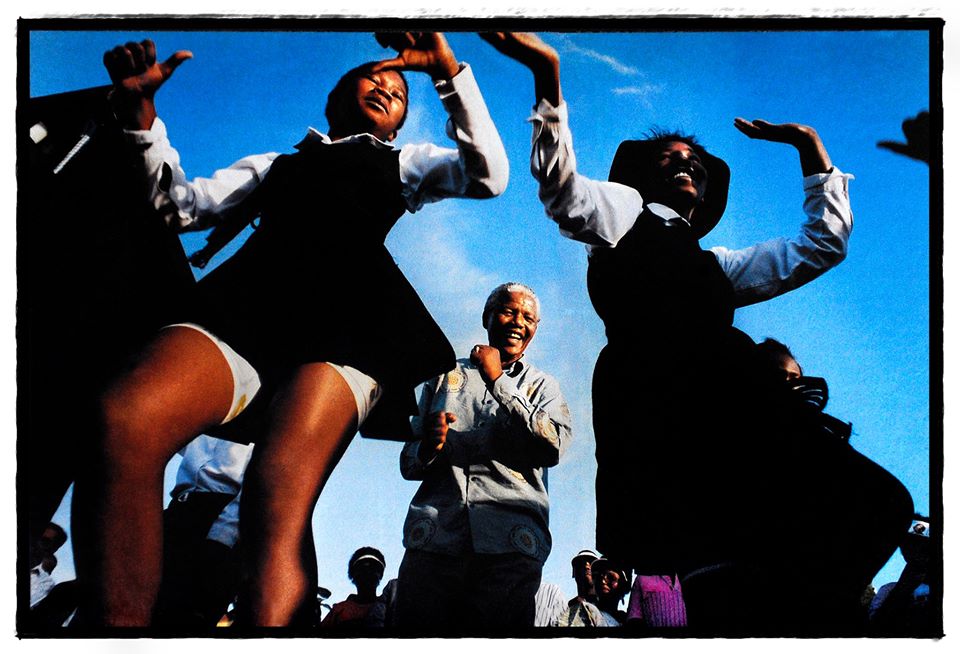
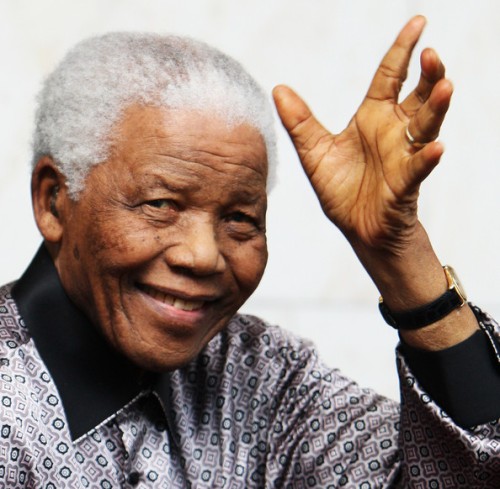
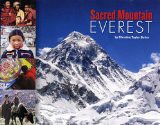
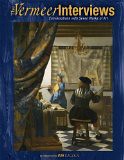
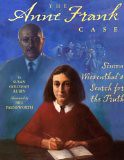

Hello,
I am wondering if you have an email where I can contact you in regards to doing some picture book reviews.
Thanks,
Ashley
[email protected]